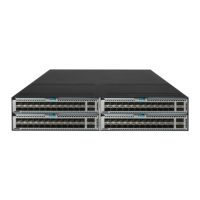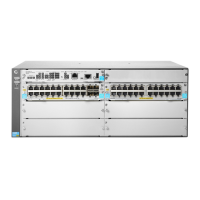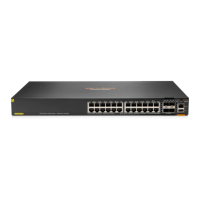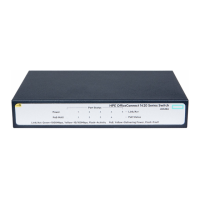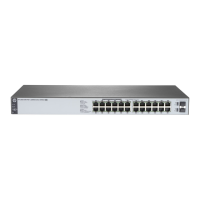198
Configuring a port to operate in automatic voice
VLAN assignment mode
Configuration restrictions and guidelines
When you configure a port to operate in automatic voice VLAN assignment mode, follow these
restrictions and guidelines:
• Do not configure a VLAN as both a voice VLAN and a protocol-based VLAN.
{ A voice VLAN in automatic mode on a hybrid port processes only tagged incoming voice
traffic.
{ A protocol-based VLAN on a hybrid port processes only untagged incoming packets. For
more information about protocol-based VLANs, see "Configuring protocol-based VLANs."
• As a best practice, do not use this mode with MSTP. In MSTP mode, if a port is blocked in the
MSTI of the target voice VLAN, the port drops the received packets instead of delivering them to
the CPU. As a result, the port will not be dynamically assigned to the voice VLAN.
• As a best practice, do not use this mode with PVST. In PVST mode, if the target voice VLAN is
not permitted on a port, the port is placed in blocked state. The port drops the received packets
instead of delivering them to the CPU. As a result, the port will not be dynamically assigned to
the voice VLAN.
• As a best practice, do not configure both dynamic MAC-based VLAN assignment and automatic
voice VLAN assignment mode on a port. They can have a negative impact on each other.
Configuration procedure
To configure a port to operate in automatic voice VLAN assignment mode:
Step Command Remarks
1. Enter system view.
system-view
N/A
2. (Optional.) Set the voice
VLAN aging timer.
voice-vlan aging
minutes
By default, the aging timer of a
voice VLAN is 1440 minutes.
The voice VLAN aging timer
takes effect only on ports in
automatic voice VLAN
assignment mode.
3. (Optional.) Enable the
voice VLAN security
mode.
voice-vlan security enable
By default, the voice VLAN
security mode is enabled.
4. (Optional.) Add an OUI
address for voice packet
identification.
voice-vlan mac-address
oui
mask
oui-mask
[
description
text
]
By default, system default
OUI addresses exist. For
more information, see Table
14.
5. Enter interface view.
• Enter Layer 2 Ethernet interface
view:
interface interface-type
interface-number
• Enter Layer 2 aggregate interface
view:
interface bridge-aggregation
interface-number
N/A

